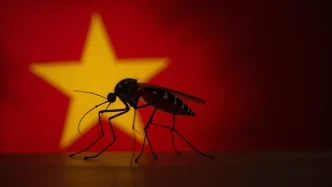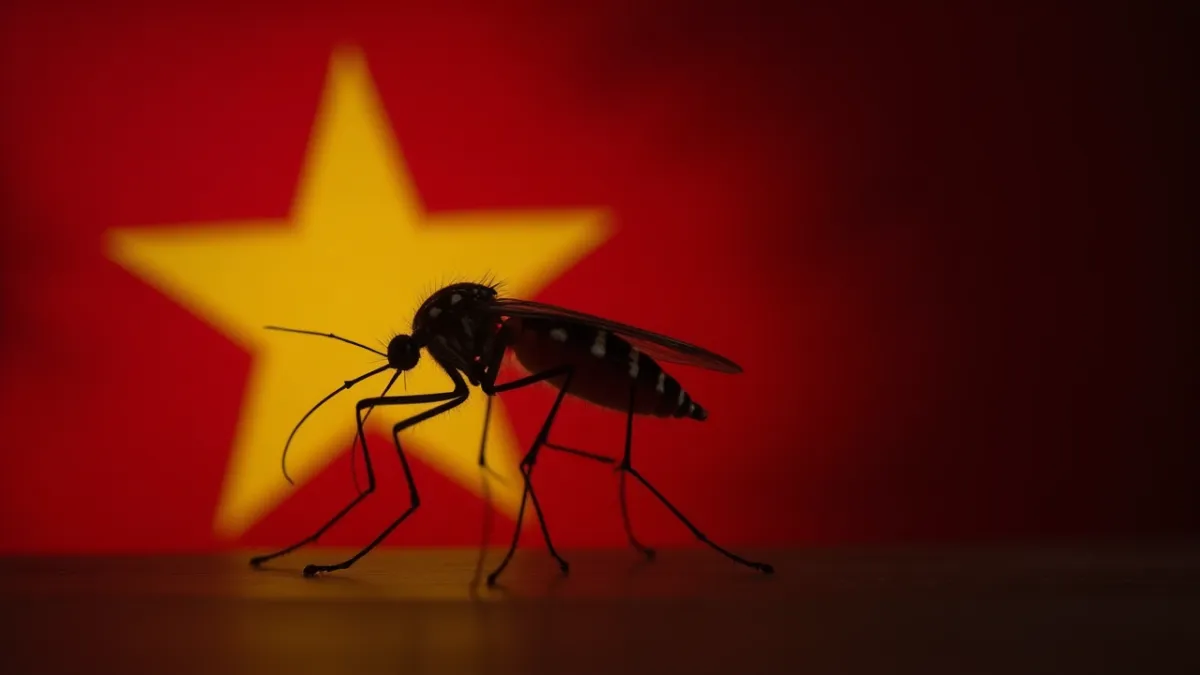Ho Chi Minh City, a bustling metropolis in southern Vietnam, is grappling with a dramatic surge in dengue fever cases, with numbers nearly doubling in the first eight months of 2025 compared to the entirety of 2024. According to the latest report from the Pasteur Institute in Ho Chi Minh City, the southern region has recorded over 44,400 cases and 11 deaths as of August 3, highlighting a growing public health crisis as mosquito-borne diseases threaten communities during the rainy season.
A Steep Rise in Dengue Cases
The southern region of Vietnam, which includes Ho Chi Minh City and surrounding provinces, has seen a staggering 97 percent increase in dengue fever cases compared to the full year of 2024. Last year, during the same January-to-August period, the region reported 22,473 cases and seven deaths. This year’s figures, however, paint a grimmer picture, with the number of cases in just the first six months of 2025 equaling the total for all of 2024. Dr. Lương Chấn Quang, head of the Department of Disease Control and Prevention at the Pasteur Institute, emphasized the severity of the situation during a recent meeting on infectious disease response in Ho Chi Minh City.
Analysis of nearly 500 serum samples revealed that the predominant strain driving this outbreak is dengue virus serotype 2, or DENV-2, which has been dominant since 2022. According to Dr. Quang, DENV-2 is particularly concerning due to its association with large outbreaks and a higher likelihood of severe illness compared to other serotypes. Currently, the rate of severe dengue cases in the region stands at 2.3 percent, aligning with historical averages, while the mortality rate remains relatively low at 0.027 percent for adults and 0.021 percent for children.
Of the 11 reported dengue-related deaths this year, approximately 70 percent were adults, a shift from typical patterns where children are often more vulnerable. This trend underscores the need for broader public health interventions targeting all age groups, as the disease continues to spread through Aedes mosquitoes, which thrive in urban environments like Ho Chi Minh City during the wet season.
Other Infectious Diseases on the Radar
Beyond dengue, southern Vietnam is also contending with significant outbreaks of other infectious diseases. As of August 3, the region reported 36,141 cases of hand, foot, and mouth disease, a viral illness primarily affecting young children, along with 11 associated deaths. This marks a 31.7 percent increase compared to the same period in 2024. Health officials warn that the upcoming school year could exacerbate the spread, as children congregate in close quarters, facilitating transmission.
Additionally, the region has seen a sharp rise in measles cases, with 38,850 infections and seven deaths recorded in the first eight months of 2025. Measles, a highly contagious disease preventable by vaccination, poses a significant risk to unvaccinated populations, particularly in densely populated urban areas. These overlapping health challenges strain local healthcare systems, with hospitals like Children Hospital 2 in Ho Chi Minh City becoming focal points for treatment and prevention efforts.
While no cases of Chikungunya, another mosquito-borne virus spread by Aedes species, have been detected through surveillance in Vietnam’s border provinces, officials remain vigilant. Dr. Quang noted the potential risk of Chikungunya entering the country, given the shared vector with dengue and the increasing movement of people across borders in the region.
Public Health Responses and Challenges
In response to the rising tide of dengue and other infectious diseases, health workers across southern Vietnam are intensifying efforts to curb transmission. At facilities like Children Hospital 2 in Ho Chi Minh City, medical personnel are actively spraying chemicals to eliminate mosquitoes, a critical measure to reduce the Aedes population in high-risk areas. These efforts, while essential, face challenges due to the scale of urban environments and the persistence of standing water—ideal breeding grounds for mosquitoes—during the rainy season.
Public health campaigns are also underway to educate communities on preventive measures, such as removing stagnant water, using mosquito nets, and seeking early medical care for symptoms like high fever and rash, which can indicate dengue or other viral infections. However, the rapid urbanization of cities like Ho Chi Minh City, coupled with inconsistent waste management and limited resources in some communities, complicates these initiatives.
The Pasteur Institute and local authorities are prioritizing surveillance and early detection, particularly for severe cases of dengue that require hospitalization. With DENV-2 driving the current outbreak, the risk of severe illness—characterized by complications like plasma leakage and organ impairment—remains a pressing concern. Hospitals are preparing for potential spikes in admissions as the rainy season progresses, while also managing concurrent outbreaks of hand, foot, and mouth disease and measles.
Broader Implications for Vietnam and Beyond
The surge in dengue fever and other infectious diseases in southern Vietnam reflects broader regional challenges in Southeast Asia, where climate conditions, population density, and cross-border movement amplify the spread of vector-borne illnesses. The dominance of DENV-2, known for causing severe outbreaks, raises questions about the long-term efficacy of current control measures and the need for innovative solutions, such as vaccine development or genetically modified mosquitoes to reduce Aedes populations.
Vietnam’s health authorities are also mindful of global health trends, as diseases like Chikungunya, prevalent in neighboring regions, could easily cross borders through trade and travel. Strengthening surveillance systems at entry points and enhancing regional cooperation will be critical to preventing the introduction of new pathogens while managing existing outbreaks.
For communities in Ho Chi Minh City and beyond, the current health crisis serves as a stark reminder of the interconnectedness of environmental and public health challenges. As the school year approaches, parents and educators face heightened anxiety over hand, foot, and mouth disease, while measles outbreaks underscore gaps in vaccination coverage that must be urgently addressed.
Looking Ahead
As southern Vietnam battles this multifaceted health crisis, the coming months will test the resilience of its public health infrastructure. With dengue cases already surpassing last year’s totals and other infectious diseases on the rise, the region faces an uphill battle to protect its population. Will intensified mosquito control and public awareness campaigns be enough to curb the spread, or will innovative approaches be needed to address these persistent threats? For now, the focus remains on safeguarding vulnerable communities, particularly children and adults at risk of severe illness, as the rainy season continues to fuel the outbreak.















